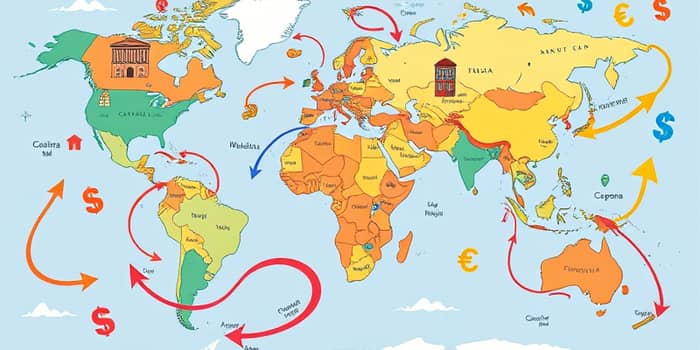
In late 2025, global monetary policy sits at a crossroads. Decision-makers face complex trade-offs as economies recover unevenly, inflation ebbs and flows, and geopolitical tensions reshape capital movements.
Understanding these dynamics empowers businesses, investors, and citizens to make strategic choices—and seize opportunities amid uncertainty.
The post-pandemic recovery has entered a phase of volatile global landscape of uncertainty. Supply chain disruptions, commodity swings, and shifting trade alliances force central banks into reactive stances.
Major drivers behind this environment include:
Understanding these forces is the first step to decoding monetary policy signals and anticipating future moves.
Central banks have charted divergent monetary policy approaches worldwide, reflecting local conditions. While some markets loosen rates to support growth, others hold or tighten to tame inflation.
Key regional stances as of November 2025:
This snapshot reveals how growth prospects, labor market strength, and inflation trajectories drive policy. Stakeholders should monitor press releases and minutes to stay ahead of turning points.
Traditional levers—policy rates, asset purchases, forward guidance, and FX interventions—remain central. Yet the toolset has been refined:
For practitioners, understanding how central banks calibrate these instruments unlocks better forecasting of market moves and helps craft resilient portfolios.
Recent reviews (notably the Fed’s comprehensive 2025 framework update) emphasize the need to preserve central bank operational independence. With governments ramping up spending, safeguarding unbiased policy remains vital.
Communication strategies have also evolved. Central banks now deploy: clear inflation targets and explicit guidance tiers, while outreach programs (“Fed Listens” and equivalents) gather real-economy feedback. This transparency anchors expectations and reduces market jitters.
Practical tip: align your expectations with central bank forward guidance, but remain flexible—policy stances can pivot if data surprises emerge.
Looking to 2026, the road is fraught with risks and opportunities. Key headwinds include:
Forward guidance signals from the Fed and ECB signal a readiness to cross the inflation bridge only with clear evidence. APAC policymakers, less tethered to US moves, will focus sharply on domestic indicators.
Whether you’re a corporate treasurer, investor, or policy analyst, actionable steps include:
Maintaining a diversified view and adapting swiftly to policy shifts can turn uncertainty into strategic advantage.
As we move beyond 2025, global central banks must balance growth support with inflation control amid unpredictable shocks. Decoding their signals—through rates, guidance, and communication—offers a compass in turbulent times.
By staying informed, embracing adaptive policy frameworks, and anchoring strategies to robust data, businesses and investors can confidently chart their course through the evolving monetary landscape of 2026 and beyond.
References





